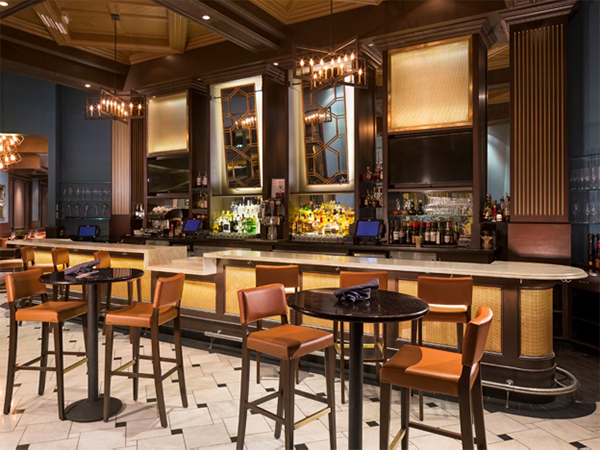 Selecting items and materials for a new restaurant project or substantial renovation often hinges on the availability of products and the lead times to acquire them. Although cost is an important factor, many times a stronger consideration is whether a supplier can meet a tight construction schedule.
Selecting items and materials for a new restaurant project or substantial renovation often hinges on the availability of products and the lead times to acquire them. Although cost is an important factor, many times a stronger consideration is whether a supplier can meet a tight construction schedule.
Ideally, designers have at least a few weeks to obtain price quotes from several suppliers and choose items that cost the least. “If there is time, we like to get quotes,” says Sonja Haviland, co-founder of the Providence, R.I.-based Superette Studio. The project schedule is often a constraint, though. It isn’t cost-effective to try to save a hundred dollars here and there by bidding every item out if it means delaying the schedule and pushing back the opening date because any savings would be eaten up by the loss of income from a delayed opening.
Some designs call for one or a few key items that are intrinsic to the desired look. Superette completed a project recently for a new concept with a design inspired by Parisian parks. The firm sourced a custom wall covering from a French art studio early in the specification process to ensure it would arrive on time. Seeking other suppliers to compare prices wasn’t an option due to the timeline.
Haviland had come across the studio’s work while on vacation in Paris a few years ago. The studio’s aesthetic was a perfect match for the design concept. “This was the one thing that we really felt we had to have,” Haviland says. “We could compromise on other things.” The owner was willing to pay a premium for the wall covering, and Superette looked for savings as they specified other materials and furnishings to keep within budget.
When sourcing most items, designers often rely on sales representatives for recommendations. “We look at them as kind of an extension of our team,” says Haley Mistler, co-founder, Superette Studio. Most sales reps work with multiple brands and keep current with new product lines, making life easier for designers who don’t have enough time to track many of the latest product introductions themselves.
It’s important for designers to cultivate relationships with sales reps. “Over time, they get to know our aesthetic preferences,” making them more valuable to designers, Mistler says. By working with multiple brands and numerous design and restaurant clients, sales reps also track how various product lines fare in the field. This is valuable insight when assessing the durability of countertop materials, tables, chairs, flooring and other items.
When specifying products, designers often request product recommendations based on aesthetic and budget criteria from multiple sales reps. Reps then submit proposals that typically include information on product availability and how much time it will take to assemble and ship an order.
Shipping and storage round out the concerns surrounding procurement. While shipping delays are not as prevalent as they were in the aftermath of the COVID-19 pandemic, they are still a concern, Haviland and Mistler say. Sourcing items from overseas adds risk as these orders are subject to delays in both international and domestic ports. At press time, for instance, a pending strike by East Coast dockworkers could stall shipping.
On some projects, Superette has tracked shipments item by item on a spreadsheet to help clients update their construction schedules. “If the project is big enough, some will hire a procurement company to do that,” Haviland says.
Some items may be shipped during construction activity that generates a lot of dust or could subject finished objects to damage from dropped lumber or tools or some other harm. Under such circumstances, the project manager must make provisions to store things like furniture and fixtures in a safe place until conditions allow for storage on-site.



